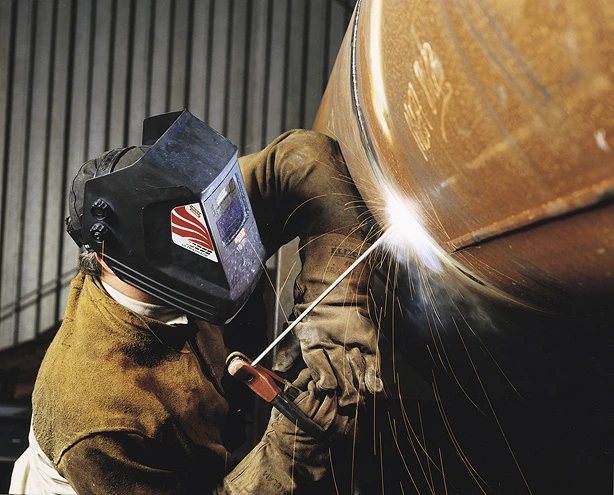The Significance of Welding WPS: Making Sure High Quality and Security in Your Jobs
The Significance of Welding WPS: Making Sure High Quality and Security in Your Jobs
Blog Article
The Ultimate Overview to Welding WPS Procedures: A Comprehensive Summary for Welders
In the complex globe of welding, Welding Procedure Requirements (WPS) offer as the backbone of making sure high quality, uniformity, and security in welding procedures (welding WPS). As we dive into the different elements of a WPS and check out the ins and outs of credentials and accreditation, we will certainly discover the important duty these procedures play in the realm of welding.
Significance of WPS Procedures
Understanding the relevance of Welding Procedure Specifications (WPS) procedures is vital for ensuring the top quality and integrity of bonded frameworks. WPS procedures work as a roadmap for welders, describing the required steps, criteria, and products required to accomplish an audio weld. By adhering to WPS standards, welders can make certain consistency in their job, leading to trusted and structurally audio welds.
Among the primary reasons that WPS procedures are important is their duty in preserving weld quality and integrity. Adhering to the specified welding parameters and methods outlined in the WPS aids avoid flaws such as porosity, splitting, or insufficient combination, which can jeopardize the strength and longevity of the weld. Furthermore, WPS treatments are vital for guaranteeing conformity with industry standards and codes. By following recognized WPS standards, welders can demonstrate that their work fulfills the required needs for safety and security and quality, offering guarantee to clients, inspectors, and regulative bodies. Basically, the value of WPS procedures can not be overemphasized, as they are essential to attaining constant, high-grade welds that meet sector standards and specs.

Elements of a WPS
A Welding Treatment Requirements (WPS) normally comprises crucial components that information the specific needs for performing a weld, making sure consistency and top quality in the welding process. The key parts of a WPS include crucial variables such as base metals, filler metals, preheat and interpass temperatures, welding processes, securing gases, welding positions, and post-weld warmth treatment needs.
Base metals describe the materials being joined, while filler steels are made use of to fill up the gap between the base steels throughout welding. Preheat and interpass temperature levels are essential for controlling the warm input and stopping issues like splitting or distortion. The welding process lays out the particular technique to be made use of, whether it's gas metal arc welding (GMAW), shielded metal arc welding (SMAW), or an additional approach. Securing gases secure the weld swimming pool from atmospheric contamination. Welding settings define the alignments in which welding can be carried out. Post-weld warmth therapy may be necessary to alleviate stresses and enhance the weld's residential or commercial properties. A comprehensive understanding of these components is important for producing a effective and extensive WPS.

Certification and Qualification
Having developed the crucial components of a Welding Treatment Specification (WPS), the emphasis now shifts towards the important aspects of certification and accreditation in welding practices.

Qualification, on the other hand, is the formal acknowledgment of a welder's qualifications by an appropriate certification body or company. Welding accreditations are commonly based upon the certain welding procedures, products, and placements a welder is certified to deal with. Holding a legitimate welding qualification demonstrates that a welder satisfies sector standards and is skilled to execute welding tasks to the called for requirements.
Developing a WPS
To create a Welding Treatment Spec (WPS) that meets sector criteria, mindful consideration of welding procedures, materials, and functional specifications is necessary. here are the findings The very first action in creating a WPS is to identify the welding procedure to be used, such as gas metal arc welding (GMAW) or secured steel arc welding (SMAW)

Implementing and Monitoring WPS
Upon settling the recommended you read extensive Welding Treatment Spec (WPS) that meticulously details welding processes, materials, functional specifications, and top quality assurance measures, the emphasis changes to efficiently carrying out and keeping track of the well-known procedures. Execution entails guaranteeing that all welders entailed in the project recognize with the WPS and follow it diligently during the welding procedure. This calls for giving adequate training and supervision to assure adherence to the specified procedures. Keeping an eye on the WPS involves continual oversight to confirm that welding activities line up with the documented specifications. Examinations, screening, and top quality control measures are necessary parts of view website the surveillance process to identify any type of issues or deviations without delay. Normal audits and testimonials of the welding procedures aid in preserving uniformity and top quality throughout the task. Efficient execution and surveillance of the WPS are crucial for making certain the integrity, stamina, and security of the welded joints, eventually adding to the overall success of the welding project.
Final Thought
Finally, understanding and adhering to Welding Procedure Specifications (WPS) is essential for welders to ensure high quality, uniformity, and safety and security in their job. By knowing the parts of a WPS, obtaining appropriate qualifications and accreditations, developing detailed procedures, and implementing and checking them properly, welders can enhance their skills and proficiency in welding practices. Complying with WPS procedures is crucial for generating premium welds and conference market criteria.
In the complex world of welding, Welding Procedure Specs (WPS) offer as the foundation of making sure top quality, uniformity, and safety in welding operations. The welding procedure outlines the particular method to be utilized, whether it's gas steel arc welding (GMAW), shielded metal arc welding (SMAW), or one more technique.To establish a Welding Treatment Specification (WPS) that meets industry standards, careful factor to consider of welding procedures, products, and functional parameters is vital. The very first step in creating a WPS is to determine the welding procedure to be used, such as gas metal arc welding (GMAW) or shielded steel arc welding (SMAW)Upon finalizing the comprehensive Welding Procedure Spec (WPS) that diligently details welding procedures, products, functional criteria, and quality assurance steps, the focus moves to effectively executing and keeping track of the established treatments.
Report this page